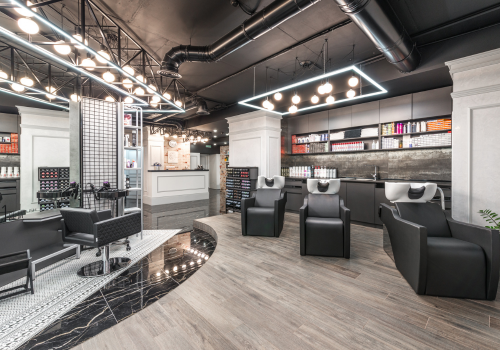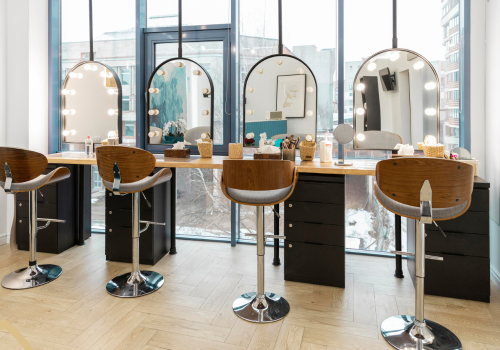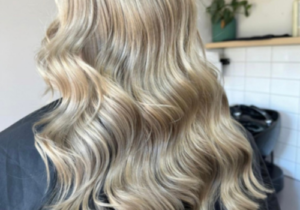Understanding the concept ofecological footprint and its relevance has never been more important than it is today. Preserving our planet is essential to ensuring a viable future for generations to come. Our ecological footprint represents the impact of our activities on the environment, including energy consumption, waste production, water use and much more. Within the company, the exhibition is one of the best places for socializing, but also for consuming energy. There are simple and effective ways to reduce our footprint in this central living space. Here's the first of eight tips for a "greener" living room.
Reduced energy consumption
To maximize savings while reducing our ecological footprint, it's essential to optimize our energy consumption. The living room is often the main culprit, housing a multitude of electronic gadgets and light sources. Here are a few actions to consider:
Optimizing salon lighting
It is advantageous to use energy-efficient bulbs, such as LED or compact fluorescent bulbs, which consume up to 80 % less energy than traditional incandescent bulbs. What's more, the use of dimmers means that light intensity can be adjusted to suit requirements, which can also help reduce energy consumption.
Sustainable materials

It's important to consider the type of materials used in your living room when it comes to improving your ecological footprint. Eco-responsible materials are more environmentally friendly and can help reduce waste.
Furniture selection
When furnishing your living room, opt for furniture made from sustainable materials, such as FSC-certified wood or bamboo. Not only does this furniture last longer, it's also generally more durable than its plastic or metal counterparts.
In addition, encouraging the second-hand supplies is also a great way to minimize your footprint. Sites such as Le Bon Coin, eBay and local second-hand stores offer a multitude of quality used items.
The use of eco-responsible textiles
Curtains, rugs and cushions can all add warmth and comfort to your living room. However, many textiles are made from
See also: 5 good reasons to use vinegar on your hair?
Optimizing thermal insulation
Optimizing thermal insulation plays a significant role in improving our ecological footprint. It minimizes the use of heating and air conditioning, two major energy consumers.
Examining thermal insulation options
There are several options when it comes to thermal insulation for your living room. First, there's window and door insulation. Air leakage through these openings can lead to a significant increase in energy consumption. To remedy this, you can opt for double-glazed windows and well-insulated doors.
Next, consider insulating the walls, floor and roof. We recommend using natural insulating materials such as cellulose wadding, sheep's wool or wood wool. These insulating materials have the advantage of being biodegradable and less harmful to the environment as they break down.
Use of insulating curtains
In winter, insulating curtains can help retain heat inside your living room by preventing heat loss through the windows. Opt for thick, tight-fitting curtains that can be closed at night for better thermal insulation. In summer, these same curtains can also help block out excessive heat from the sun, reducing the need for air conditioning.

The circular economy at your salon's service
The circular economy is a cross-industry economic system that aims to maximize resource efficiency. In the context of your show, this could mean using second-hand or recycled items, or exchanging or renting items rather than buying them.
Reuse and recycling
Giving new life to under-used or unwanted objects by reusing or recycling them is a major step towards promoting the circular economy. Not only does this help reduce the amount of waste produced, it also saves resources and energy by avoiding the manufacture of new products. Many objects can be recovered or refurbished, such as furniture, lamps, carpets, picture frames and decorative items.
Renting and sharing
New business models are also emerging, implementing solutions based on sharing, swapping or renting. These practices can be applied to various elements of your living room, from electronics to furniture to decorative accessories. For example, rather than buying new furniture, you can consider renting furniture for a set period of time, reducing the demand for new materials and extending the life of existing furniture.
Investing in sustainable products
When buying new items for your living room, focus on high-quality, durable products that are built to last. Opt for furniture made from sustainable and recyclable materials, such as FSC-certified wood, bamboo or recycled metal. Also look for brands that implement sustainable practices throughout their supply chain and offer recycling or take-back options at the end of the product's useful life.
Repair and maintenance
Taking care of your existing items by maintaining and repairing them when necessary is also an important practice in the circular economy. Rather than throwing away damaged or worn items, consider repairing or restoring them to extend their lifespan. This can include replacing defective parts, renovating the surface or repairing components.
By adopting a circular economy approach to the design and maintenance of your living room, you can help reduce your ecological footprint while creating a sustainable, comfortable and aesthetically pleasing living space.





